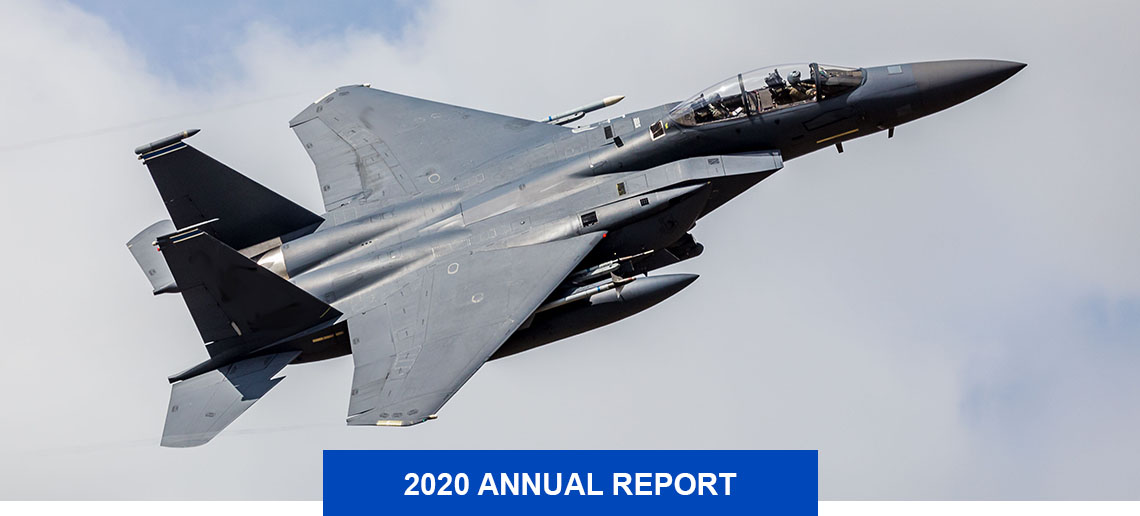
About the Header
SwRI engineers evaluated onboard electronic countermeasure systems used to help the F-15 fighter aircraft elude enemy radar and targeting technology, recommending a new, advanced digital jammer for the aircraft.
Southwest Research Institute pushes the boundaries of engineering and physics to create advanced technologies and systems that meet or exceed our clients’ challenging demands. Our diverse staff and world-class expertise result in innovative, cost-effective approaches that solve complex problems, particularly for national security applications.
Defense
Radio frequency (RF) surveillance and communications intelligence (COMINT), particularly using antennas and signals processing, are long-standing programs at SwRI. Signals intelligence (SIGINT) specialists help U.S. and allied militaries gather communications intelligence, fueling capabilities in electronic warfare (EW) that use electromagnetic techniques to thwart adversarial operations. SwRI supports EW techniques and technology to control the electromagnetic spectrum and deny advantages to an opponent, while ensuring friendly dominance of the spectrum.
SwRI is developing modular Ravager EW technology designed to maximize operational effectiveness and flexibility in response to emerging threats, while minimizing future supplier and parts shortages. We are integrating this advanced technology into legacy military EW systems, addressing size constraints and operational profiles of existing and future systems. SwRI engineers are currently developing and integrating Ravager proof-of-concept hardware and software into an existing military system.
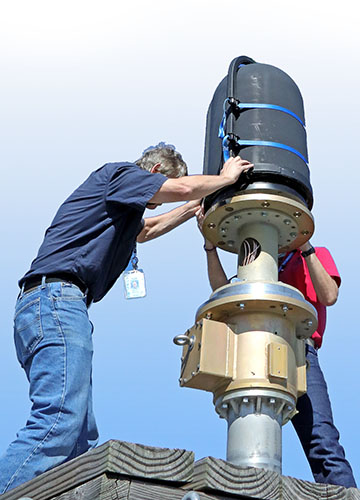
SwRI is updating a communications-intercept, direction-finding antenna designed and certified for underwater applications for a new submarine platform.
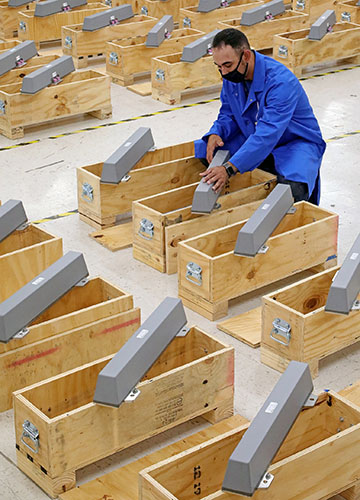
While most of our research and development ends with demonstrating prototypes, SwRI is known worldwide for developing, producing, installing and servicing SIGINT technology, such as these antennas, used for various U.S. and allied military applications.

In 2020, engineers evaluated new antenna technology in our anechoic chamber. The SwRI-designed cylindrical slot array demonstrated high-quality omnidirectional output while also performing well as a DF array.
SwRI continues to improve the Adaptive Threat Environment Acquisition (ATHENA) receiver, which rapidly detects all signals of interest, extracting signals from a single radar burst or in a congested or contested signal environment. In 2020, we added a 1-GHz receiver, improved signal identification algorithms and expanded ultra-wideband capabilities for the hardware/software solution.
To monitor adversarial activities, intelligence operators use multiple individual tuners covering segments of the RF spectrum to survey the entire spectrum of digital communications. Configuring these resources offers great flexibility but can overwhelm operators. Using machine learning techniques, SwRI is automating tuner settings via reinforcement learning to meet intelligence goals in very- and ultra-high frequency (VHF-UHF) bands.
New maritime signal intelligence specifications require smaller packages for mobile platforms such as ships and planes. With internal funding, SwRI engineers developed a next-generation VHF-UHF signal processing architecture that combines communications and electronic intelligence capabilities in a single product, while reducing the system’s size, weight and power. The new architecture increases instantaneous bandwidth for both signal detection and direction finding by an order of magnitude, increasing the probability of intercepting a range of radio frequency signals.
Processing analog voice signals is a major focus for maritime tactical SIGINT operations. SwRI is enhancing the graphical user interface for linguistic and translation applications while strengthening capabilities in speech processing, starting with language identification and progressing into speaker and keyword recognition.
We continued to expand our capabilities in long-range, high-frequency radio communications. We monitor global radio transmissions to gain insight into the state of the ionosphere, the layer of the Earth’s atmosphere that reflects and modifies shortwave radio communications, to solve practical problems.
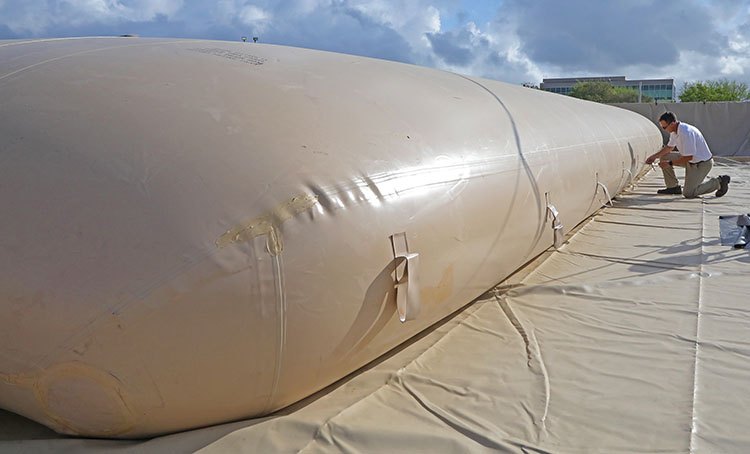
Engineers completed a fuel-bladder test facility, equipped with a concrete floor and surrounding containment structure, to test military fuel bladders. These large portable containers store fuel for battlefield operations.
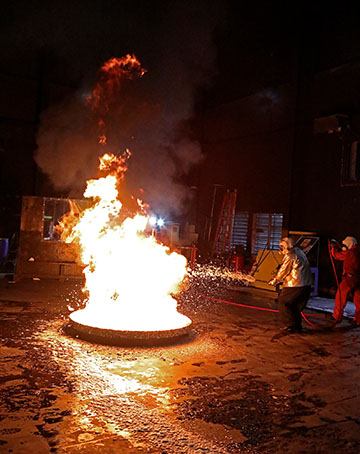
SwRI is testing a client’s compressed air foam delivery equipment designed to optimize the performance of new environmentally friendly fire-suppressing foams for the military.
SwRI engineers designed and developed a multi-channel, software-defined radio prototype with microservices architecture, which links small software functions to perform large, complex jobs — in this case, multiple simultaneous cyber, electronic attack, and communications and electronic intelligence tasks. SwRI will build a ruggedized product using modular, open-systems hardware architecture for installation on ships, aircraft and airborne pods.
To collect and broadcast signals, we used internal funding to develop a cylindrical, long-slot antenna array for mast-mounted installations, such as those aboard ships. SwRI’s new design demonstrated high-quality, omnidirectional output while also performing well as a DF array. As a result, the Royal Canadian Navy has selected the new configuration, and SwRI will build a ruggedized product for shipboard installation.
The high demand for SIGINT and related services in 2020 drove expansions and updates to our antenna measurement facility, which included automating precision antenna measurements at extended frequency ranges.
SwRI also upgrades systems on aging aircraft platforms. For example, we are overhauling the B1-B Lancer’s fuel center of gravity management system to support extending the aircraft’s service life through 2040. The effort requires radiation- and electromagnetic-pulse-resistant hardware.
For 63 years, SwRI has hosted a government-owned, contractor-operated facility to provide advanced vehicle fluids research, development and engineering for the U.S. Army and other government agencies. The laboratory was renamed the U.S. Army Ground Vehicle Systems Center Fuels and Lubricants Research Facility this year. Notable accomplishments include enhancing our filtration evaluation facilities to provide cyclic flow and vibration testing to assure filters will work under the stresses of real-world operating conditions. We also completed a new fuel farm for testing military battlefield fuel bladders, large collapsible containers that can be airlifted to a forward site, filled from large fuel trucks and then used to supply fuel for tactical vehicles. The fuel-bladder test facility is equipped with a concrete floor and a surrounding containment structure. SwRI microbiologists are collaborating with fuels and lubricants specialists, evaluating the effectiveness of biocides in enhancing the stability of stored military fuels.
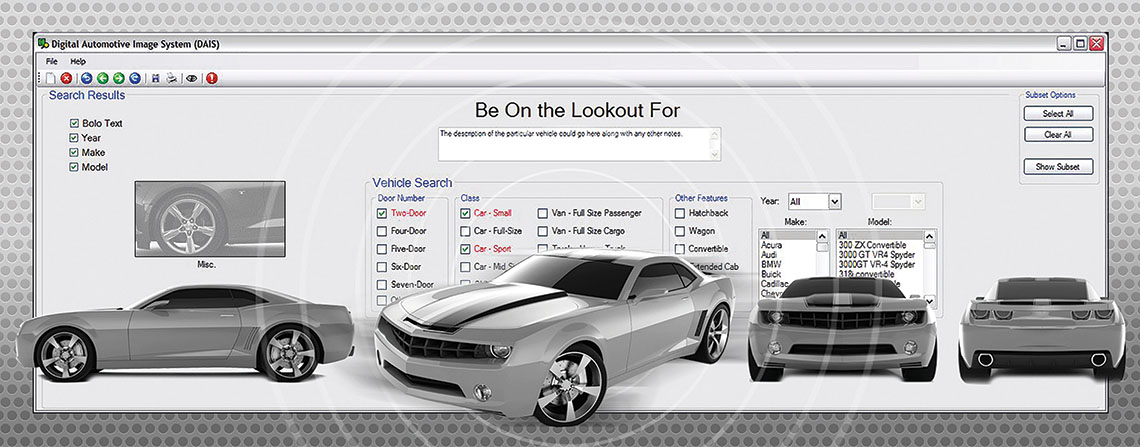
For more than 10 years, law enforcement organizations across the U.S. and Canada have used the SwRI-developed Digital Automotive Image System (DAIS) to investigate crimes involving motor vehicles.
As one of the world’s largest organizations dedicated to fire technology with more than 30 years of research supporting chemical weapons destruction activities, we initiated the “Bolsa Caliente” research program for the U.S. Department of Defense in 2020. This program uses a specially insulated lightweight bag and thermite to safely destroy contaminated uniforms and other items exposed to chemical agents on the battlefield.
Security
Understanding risks and protecting computer-based systems is of concern to the military, businesses and individuals alike. SwRI specializes in both physical and cybersecurity applications for the military, as well as addressing cyberthreats to intelligent vehicles and transportation systems.
SwRI engineers are studying 5G network core and security applications to develop new global geolocation and “geo-enabling” infrastructure. The techniques use geographic information as part of non-location-related activities to update and support critical networks and information exploitation functions.
In 2020, SwRI made a sixth update to the Digital Automotive Image System (DAIS). Since 2007, thousands of law enforcement organizations across the U.S. and Canada have used this software tool to investigate crimes involving motor vehicles. DAIS helps identify vehicles seen by witnesses or captured by video cameras at a crime scene, using SwRI-developed algorithms. Updates provided this year increase the characteristics that can be searched to aid with investigations.
For more information visit Defense & Security.
